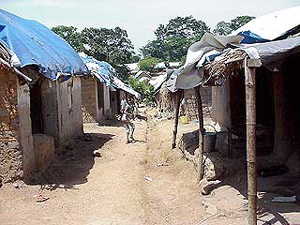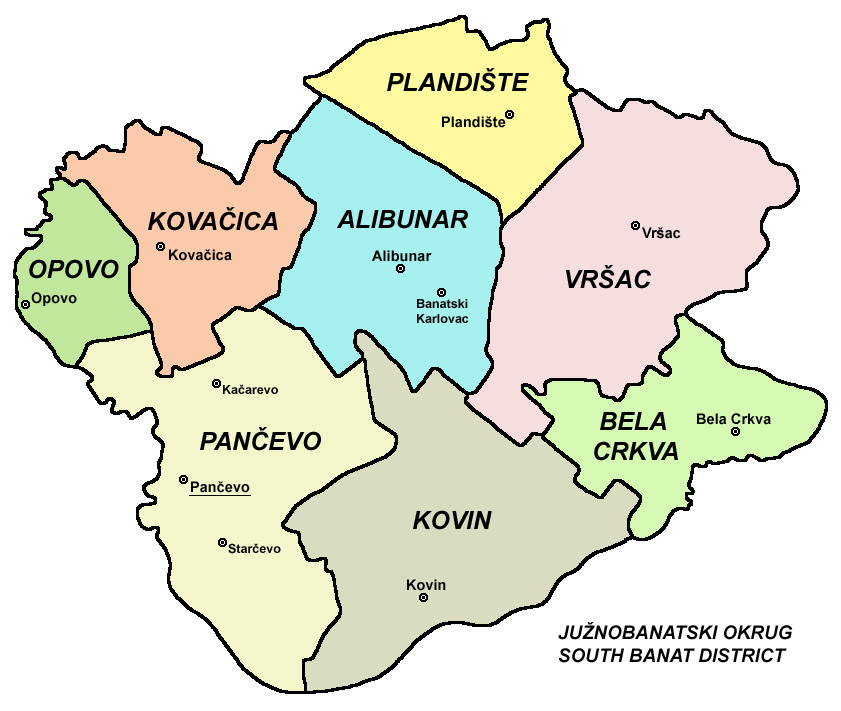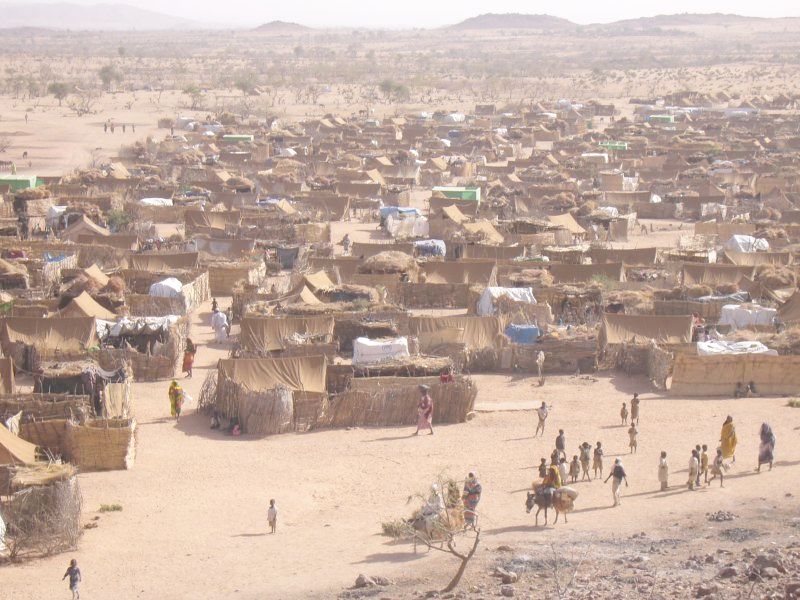|
─īardak, Kovin
─īardak is a former vacation settlement on the southern edge of the Deliblatska pe┼Ī─Źara (Deliblato Sands), in the community of Kovin in Serbia. It has served as a refugee camp since 1991. The camp is about five km east of the village of Deliblato in the South Banat District. During the Yugoslav Wars many Serbs fled from Croatia and Bosnia Bosnia and Herzegovina, sometimes known as Bosnia-Herzegovina and informally as Bosnia, is a country in Southeast Europe. Situated on the Balkans, Balkan Peninsula, it borders Serbia to the east, Montenegro to the southeast, and Croatia to th ..., or were driven out. Some of them found refuge in the former vacation settlement in ─īardak. In 2005, about 200 people lived in the camp. References External links Report by Radio Vatican {{DEFAULTSORT:Cardak Refugee camps in Serbia Populated places in South Banat District Kovin ... [...More Info...] [...Related Items...] OR: [Wikipedia] [Google] [Baidu] |
Deliblatska Pe┼Ī─Źara
Deliblato Sands (; ) is a large sand area covering around of ground in Vojvodina province, Serbia. It is located in southern Banat, situated between the river Danube and the southwestern slopes of the Carpathian Mountains. The sands are named after the village of Deliblato, in the municipality of Kovin. Its main masses are elliptical shaped hills with steppe grassland plains and steppe forests. The Deliblato Sands is the largest sandy terrain in Europe, once part of a vast prehistoric desert, having originated from the withdrawal of the Pannonian Sea. They are home to many endemic species of plants and animals which are rare or endangered in Europe and globally. Due to its forest and surroundings, it was declared a special nature reserve. On a national level, it represents a natural asset of special importance falling under protection category I. It is referred to as the "European Sahara", or the " Old Continent's oldest desert". Geography The Deliblato is an expanse of A ... [...More Info...] [...Related Items...] OR: [Wikipedia] [Google] [Baidu] |
Kovin
Kovin (, ) is a town and municipality located in the South Banat District of the autonomous province of Vojvodina, Serbia. The town has a population of 11,623, while the municipality has 28,141 inhabitants (2022 census). Other names In Romanian language, Romanian, the town is known as ''Cuvin'', in Hungarian language, Hungarian as ''Kevev├Īra'' or (until 1899) ''Temeskubin'', and in German language, German as ''Kubin'' or Temeschkubin. In the past, the town was also known as ''Donji Kovin'' ("Lower Kovin") in contrast to the town with same name in Hungary that was known in Serbian language, Serbian as ''R├Īckeve, Gornji Kovin'' ("Upper Kovin") and in Hungarian as ''R├Īckeve'' ("the Serb Kovin"). History The Dacians, Dacian tribe of Albocenses dwelled in this area in the second century AD. There are remains of the ancient Ancient Rome, Roman fortress called ''Contra Margum'', opposite to the Margum Dubravica, Margum, a fortress on the other side of the Danube. In the nint ... [...More Info...] [...Related Items...] OR: [Wikipedia] [Google] [Baidu] |
Serbia
, image_flag = Flag of Serbia.svg , national_motto = , image_coat = Coat of arms of Serbia.svg , national_anthem = () , image_map = , map_caption = Location of Serbia (green) and the claimed but uncontrolled territory of Kosovo (light green) in Europe (dark grey) , image_map2 = , capital = Belgrade , coordinates = , largest_city = capital , official_languages = Serbian language, Serbian , ethnic_groups = , ethnic_groups_year = 2022 , religion = , religion_year = 2022 , demonym = Serbs, Serbian , government_type = Unitary parliamentary republic , leader_title1 = President of Serbia, President , leader_name1 = Aleksandar Vu─Źi─ć , leader_title2 = Prime Minister of Serbia, Prime Minister , leader_name2 = ─Éuro Macut , leader_title3 = Pres ... [...More Info...] [...Related Items...] OR: [Wikipedia] [Google] [Baidu] |
Refugee Camp
A refugee camp is a temporary Human settlement, settlement built to receive refugees and people in refugee-like situations. Refugee camps usually accommodate displaced people who have fled their home country, but camps are also made for internally displaced people. Usually, refugees seek Right of asylum, asylum after they have escaped war in their home countries, but some camps also house environmental migrant, environmental and economic migrants. Camps with over a hundred thousand people are common, but as of 2012, the average-sized camp housed around 11,400. They are usually built and run by a government, the United Nations, international organizations (such as the International Committee of the Red Cross), or non-governmental organization. Unofficial refugee camps, such as Idomeni in Greece or the Calais jungle in France, are where refugees are largely left without the support of governments or international organizations. Refugee camps generally develop in an impromptu ... [...More Info...] [...Related Items...] OR: [Wikipedia] [Google] [Baidu] |
Deliblato
Deliblato (; ) is a village in Serbia, situated in the Kovin municipality in the Vojvodina province. The village has a total population of 3,498 (2002 census), with a Serb ethnic majority and a Romanian minority. The Deliblatska Pe┼Ī─Źara (Deliblato Sands), the largest sandy area in Europe, was named after this village. Name The name of the village is derived from the Turkish word ''deli'' ("Mad") and Serbian word "blato" ("mud"), thus the full meaning in English would be "Mad mud". It is known as in Romanian. Deliblato received its name from its situation in the sandy area. According to one theory, the sandy area, in the vastness of the river Danube, became very muddy during long rain periods in ancient times. The road passing through the area had been easier to cross due to the mixing of mud and sand, thus travelers called this place Deliblato. Sloveni however, the notion of the lake marked by the word 'mud' and it is not excluded that the current village got its name from ... [...More Info...] [...Related Items...] OR: [Wikipedia] [Google] [Baidu] |
South Banat District
The South Banat District (, ) is one of administrative districts of Serbia. It lies in the geographical region of Banat. According to the 2022 census, the South Banat District has a population of 260,244 inhabitants. The administrative center of the district is the city of Pan─Źevo. Cities and municipalities The South Banat District encompasses the territories of two cities and 8 municipalities: * Pan─Źevo (city) * Vr┼Īac (city) * Alibunar (municipality) * Bela Crkva (municipality) * Kova─Źica (municipality) * Kovin (municipality) * Opovo (municipality) * Pan─Źevo (municipality) * Plandi┼Īte (municipality) * Vr┼Īac (municipality) Demographics Cities and towns There are three towns with over 10,000 inhabitants: * Pan─Źevo: 73,401 * Vr┼Īac: 31,946 * Kovin Kovin (, ) is a town and municipality located in the South Banat District of the autonomous province of Vojvodina, Serbia. The town has a population of 11,623, while the municipality has 28,141 inhabitants (2022 ... [...More Info...] [...Related Items...] OR: [Wikipedia] [Google] [Baidu] |
Yugoslav Wars
The Yugoslav Wars were a series of separate but related#Naimark, Naimark (2003), p. xvii. ethnic conflicts, wars of independence, and Insurgency, insurgencies that took place from 1991 to 2001 in what had been the Socialist Federal Republic of Yugoslavia (SFR Yugoslavia). The conflicts both led up to and resulted from the breakup of Yugoslavia, which began in mid-1991, into six independent countries matching the six Republics of Yugoslavia, entities known as republics that had previously constituted Yugoslavia: Slovenia, Croatia, Bosnia and Herzegovina, Montenegro, Serbia, and North Macedonia, Macedonia (now Macedonia naming dispute, called North Macedonia). SFR Yugoslavia's constituent republics declared independence due to rising nationalism. Unresolved tensions between ethnic minorities in the new countries led to the wars. While most of the conflicts ended through peace accords that involved full international recognition of new states, they resulted in a massive number of d ... [...More Info...] [...Related Items...] OR: [Wikipedia] [Google] [Baidu] |
Croatia
Croatia, officially the Republic of Croatia, is a country in Central Europe, Central and Southeast Europe, on the coast of the Adriatic Sea. It borders Slovenia to the northwest, Hungary to the northeast, Serbia to the east, Bosnia and Herzegovina and Montenegro to the southeast, and shares a maritime border with Italy to the west. Its capital and largest city, Zagreb, forms one of the country's Administrative divisions of Croatia, primary subdivisions, with Counties of Croatia, twenty counties. Other major urban centers include Split, Croatia, Split, Rijeka and Osijek. The country spans , and has a population of nearly 3.9 million. The Croats arrived in modern-day Croatia, then part of Illyria, Roman Illyria, in the late 6th century. By the 7th century, they had organized the territory into Duchy of Croatia, two duchies. Croatia was first internationally recognized as independent on 7 June 879 during the reign of Duke Branimir of Croatia, Branimir. Tomislav of Croatia, Tomis ... [...More Info...] [...Related Items...] OR: [Wikipedia] [Google] [Baidu] |
Bosnia
Bosnia and Herzegovina, sometimes known as Bosnia-Herzegovina and informally as Bosnia, is a country in Southeast Europe. Situated on the Balkans, Balkan Peninsula, it borders Serbia to the east, Montenegro to the southeast, and Croatia to the north and southwest, with a coast on the Adriatic Sea in the south. Bosnia (region), Bosnia has a moderate continental climate with hot summers and cold, snowy winters. Its geography is largely mountainous, particularly in the central and eastern regions, which are dominated by the Dinaric Alps. Herzegovina, the smaller, southern region, has a Mediterranean climate and is mostly mountainous. Sarajevo is the capital and the largest city. The area has been inhabited since at least the Upper Paleolithic, with permanent human settlement traced to the Neolithic cultures of Butmir culture, Butmir, Kakanj culture, Kakanj, and Vu─Źedol culture, Vu─Źedol. After the arrival of the first Proto-Indo-Europeans, Indo-Europeans, the area was populated ... [...More Info...] [...Related Items...] OR: [Wikipedia] [Google] [Baidu] |
Refugee Camps In Serbia
A refugee, according to the United Nations High Commissioner for Refugees (UNHCR), is a person "forced to flee their own country and seek safety in another country. They are unable to return to their own country because of feared persecution as a result of who they are, what they believe in or say, or because of armed conflict, violence or serious public disorder." Such a person may be called an asylum seeker until granted refugee status by a contracting state or by the UNHCR if they formally make a claim for asylum. Internally Displaced People (IDPs) are often called refugees, but they are distinguished from refugees because they have not crossed an international border, although their reasons for leaving their home may be the same as those of refugees. Etymology and usage In English, the term ''refugee'' derives from the root word ''refuge'', from Old French ''refuge'', meaning "hiding place". It refers to "shelter or protection from danger or distress", from Latin ''fugere ... [...More Info...] [...Related Items...] OR: [Wikipedia] [Google] [Baidu] |
Populated Places In South Banat District
Population is a set of humans or other organisms in a given region or area. Governments conduct a census to quantify the resident population size within a given jurisdiction. The term is also applied to non-human animals, microorganisms, and plants, and has specific uses within such fields as ecology and genetics. Etymology The word ''population'' is derived from the Late Latin ''populatio'' (a people, a multitude), which itself is derived from the Latin word ''populus'' (a people). Use of the term Social sciences In sociology and population geography, population refers to a group of human beings with some predefined feature in common, such as location, race, ethnicity, nationality, or religion. Ecology In ecology, a population is a group of organisms of the same species which inhabit the same geographical area and are capable of interbreeding. The area of a sexual population is the area where interbreeding is possible between any opposite-sex pair within th ... [...More Info...] [...Related Items...] OR: [Wikipedia] [Google] [Baidu] |







